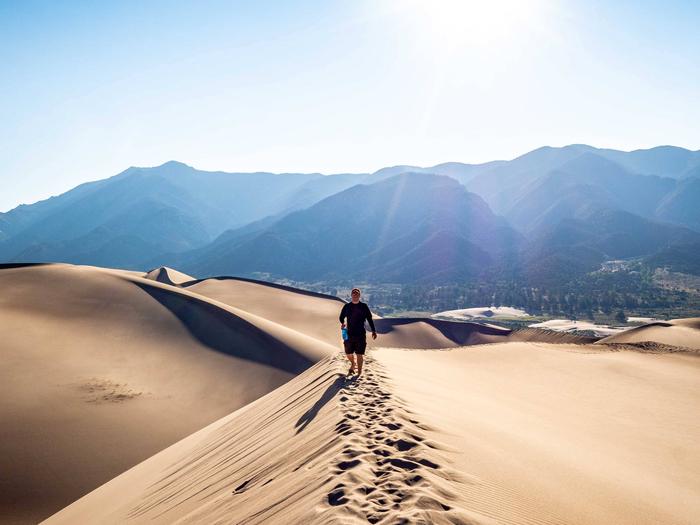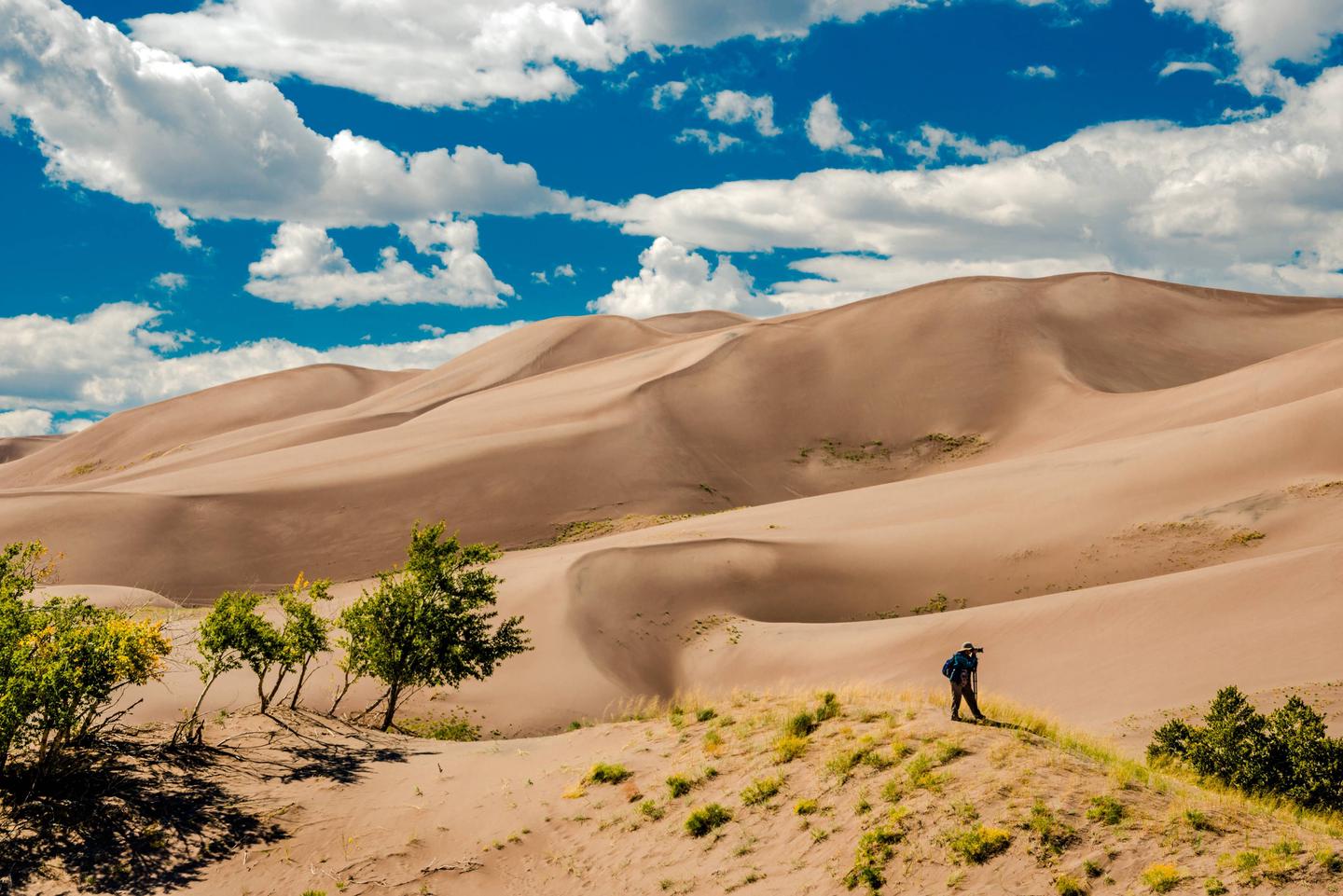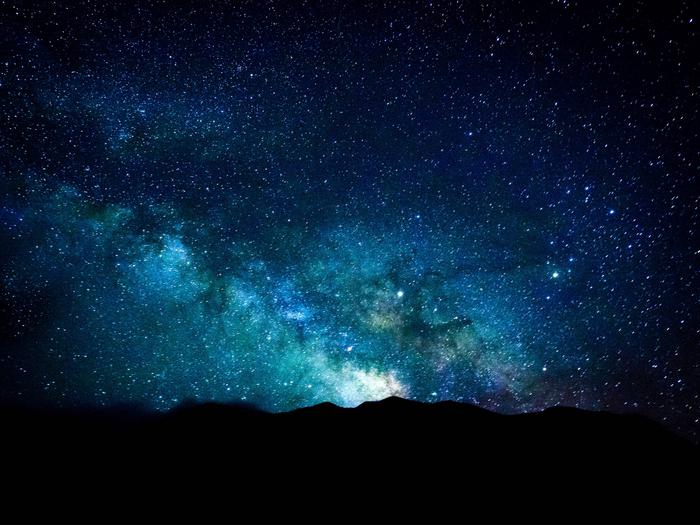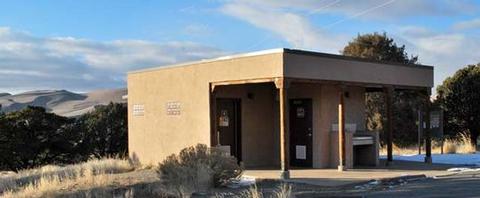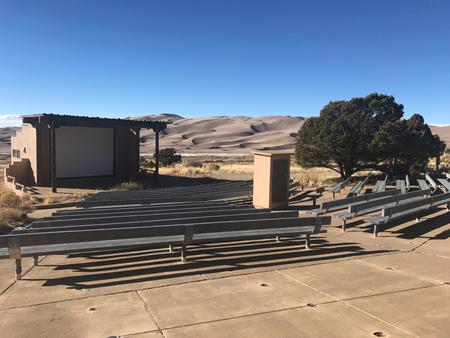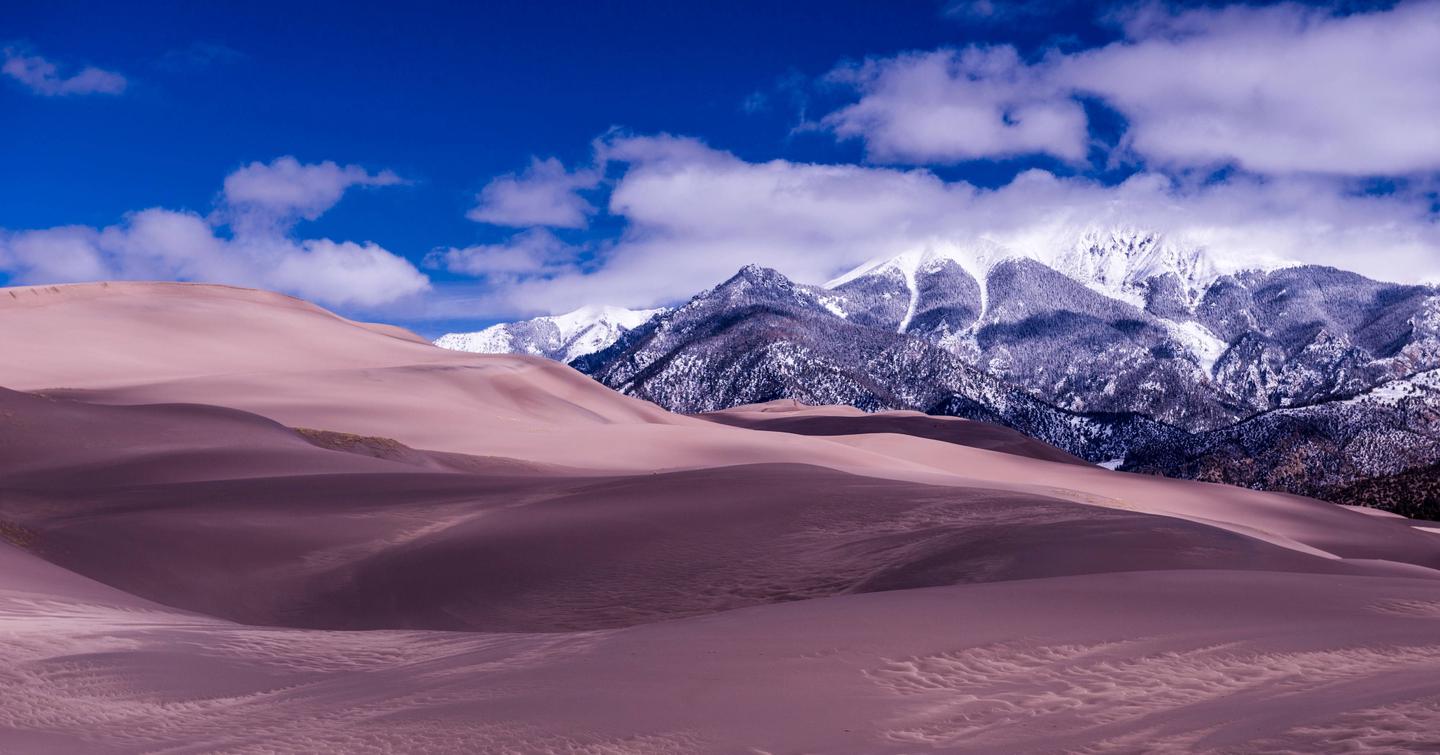Pinon Flats Campground
Great Sand Dunes National Park & Preserve
Great Sand Dunes National Park and Preserve is in the San Luis Valley of south-central Colorado at an elevation of 8,175 feet. The dunes lie on the eastern edge of the valley at the base of the Sangre de Cristo Range. The dunefield is part of the nearly 150,000 total acres of the park and preserve that also protects alpine lakes, tundra, six peaks over 13,000 feet, ancient spruce and pine forests, large stands of aspen and cottonwood, grasslands, and wetlands. The park is part of a fragile, dynamic system that influences and sustains the tallest dunes in North America.
President Herbert Hoover established the park unit as a national monument by presidential proclamation on March 17, 1932 through the Antiquities Act. The Works Progress Administration constructed the Superintendent’s Residence, now listed on the National Register of Historic Places. But otherwise, GRSA did not see a great deal of development during the New Deal. Park development did not occur in earnest until Mission 66.
During this period, the NPS was able to construct a Visitor Center, the Pinon Flat Campground (88 sites), a picnic area, five comfort stations, six single family residences and a triplex, while also building or improving roads and trails through the park. The Visitor Center shows the motivation of the Western Office of Design and Construction to configure designs to corresponding regions using principles of “regional modernism.” Built in the Pueblo Revival style, the Visitor Center mimics adobe construction through modern materials and forms blended with traditional materials and forms seen during the CCC-era in Cecil Doty’s work.
Following Mission 66, Congress designated nearly 91% of the monument as wilderness in 1976, which certainly limited the park’s ability to further develop visitor and administrative facilities. GRSA became a national park and preserve in 2000, which also included a transfer of land from the Rio Grande National Forest.
The dunes have long stood as a landmark for travelers from ancient North Americans to Southern Ute, Jicarilla Apaches, Navajos, early explorers, gold miners, homesteaders, ranchers, farmers and migrant field workers, to you - today's park visitor.
Reservations are required to stay in Pinon Flats campground. The campground offers 86 campsites. The park recommends making a reservation in advance, especially for peak summer months from May through September. Private first-come, first-served camping is also available just outside the park boundary. For more information about camping, visit www.nps.gov/grsa/planyourvisit/camping.htm. Due to the historic design, the campground may not be able to accommodate all large, modern size vehicles.
During visitor center operating hours, you can see a park film, experience interactive exhibits, speak with a helpful ranger and visit the Western National Parks Association store. Kids of all ages can pick up a Junior Ranger booklet or participate in the Junior Ranger Explorer program.
Need to Know
You must have a reservation to camp at Piñon Flats Campground. First-come, first-serve camping is not available.
Choose your site carefully. If you arrive in camping equipment that is larger than the site, there will not be an alternative site available and you may have to find accommodation outside the park.
Maximum of 2 vehicles per site. Only 8 people per site. There must be at least one adult (18+) staying in each site.
There is no waiting list for campsites and staff cannot hold available sites at the campground.
RVs over 35 ft are not allowed in the campground.
Generator use is permitted only between the hours of 8-10am, 12-2pm, and 5-7pm.
No showers, hookups or laundry facilities available in the park.
Nothing can be attached to any trees or vegetation, to include hammocks, ropes, etc.
Firewood gathering is prohibited; wood may be purchased at the camp store.
Utilize bear boxes at all times and keep campsite clean. No food may be left unattended. Picnic tables cannot be moved from one site to another.
Fireworks are prohibited.
- An entrance pass is required while in the park and is not included in the camping fee.
- Pets are allowed. They must be kept on a leash and under physical control at all times. Pets may not be left unattended.
Group sites are tent-only; no RVs or trailers allowed.
Natural Features
Great Sand Dunes are the magnificent centerpiece of a natural system that includes high mountain peaks, sparkling streams, vast grasslands and lush forests.
The campground is situated among pinon pines and sagebrush beneath the majestic Sangre de Cristo Mountains. Most sites have beautiful views of the snow-covered peaks.
A wide variety of grasses and wildflowers can be found throughout the area, and mule deer are commonly seen in and around the campground.
Nearby Attractions
Zapata Falls is just south of the national park off Highway 150. A short but slippery 1/2-mile hike leads to a 25-foot high cascade. Simply driving to the trailhead provides an excellent view of the entire dunefield and San Luis Valley, especially at sunrise or sunset. San Luis State Wildlife Area is located at the western edge of Great Sand Dunes National Park. It features a large natural lake popular for boating, water skiing, sailing, windsurfing and fishing.
Recreation
Great Sand Dunes' wide range of natural features provides endless outdoor recreational activities. The park is perfect for kids, who love exploring the dunefield on foot or by sled. Medano Creek, at the base of the dunes, is a popular place in the summertime. Kids and adults alike love to splash in the cool water.
Many kid-friendly, ranger-led activities and a junior ranger program are available.
Many miles of hiking and backpacking trails lead through the park's forests and alpine terrain, including the Mosca Pass Trail, Dunes Overlook/Sand Ramp Trail and Indian Grove Trail.
Changes & Cancellations
Rules and Reservation Policies
Contact Information
Default
11500 Highway 150 Mosca CO 81146
Phone Number
For campground inquiries, please call: 1-877-444-6777
Rental Options
Learn more about gear rental options for your trip
Driving Directions
From Highway 160, turn north on Highway 150 and follow for 16 miles to the entrance of Great Sand Dunes National Park & Preserve. Continue 5 miles north on the park's main road to reach the campground entrance.
From Highway 285, turn south onto CO-17 and follow for 36 miles (58 km). Turn east onto Lane 6 and follow for 16 miles (26 km) to Highway 150. Turn north onto Highway 150 and follow for 2.6 miles (4 km) to the entrance of Great Sand Dunes National Park & Preserve. Continue 5 miles (8 km) north on the park's main road to reach the campground entrance.
Available Campsites
- Site 042, Loop Loop 1, Type Tent Only Nonelectric
- Site 066, Loop Loop 2, Type Tent Only Nonelectric
- Site 055, Loop Loop 2, Type Tent Only Nonelectric
- Site 053, Loop Loop 2, Type Tent Only Nonelectric
- Site 030, Loop Loop 1, Type Tent Only Nonelectric
- Site 084, Loop Loop 2, Type Tent Only Nonelectric
- Site 019, Loop Loop 1, Type Rv Nonelectric
- Site 070, Loop Loop 2, Type Rv Nonelectric
- Site 028, Loop Loop 1, Type Tent Only Nonelectric
- Site 068, Loop Loop 2, Type Rv Nonelectric
- Site 015, Loop Loop 1, Type Tent Only Nonelectric
- Site 034, Loop Loop 1, Type Rv Nonelectric
- Site 041, Loop Loop 1, Type Rv Nonelectric
- Site 025, Loop Loop 1, Type Rv Nonelectric
- Site 018, Loop Loop 1, Type Rv Nonelectric
- Site 037, Loop Loop 1, Type Tent Only Nonelectric
- Site 077, Loop Loop 2, Type Rv Nonelectric
- Site 060, Loop Loop 2, Type Rv Nonelectric
- Site 071, Loop Loop 2, Type Rv Nonelectric
- Site 083, Loop Loop 2, Type Rv Nonelectric
- Site 080, Loop Loop 2, Type Rv Nonelectric
- Site 023, Loop Loop 1, Type Tent Only Nonelectric
- Site 020, Loop Loop 1, Type Rv Nonelectric
- Site 065, Loop Loop 2, Type Rv Nonelectric
- Site 081, Loop Loop 2, Type Rv Nonelectric
- Site 061, Loop Loop 2, Type Rv Nonelectric
- Site 062, Loop Loop 2, Type Rv Nonelectric
- Site 027, Loop Loop 1, Type Rv Nonelectric
- Site 011, Loop Loop 1, Type Rv Nonelectric
- Site B, Loop Group Loop, Type Group Tent Only Area Nonelectric
- Site 026, Loop Loop 1, Type Tent Only Nonelectric
- Site 075, Loop Loop 2, Type Rv Nonelectric
- Site 082, Loop Loop 2, Type Rv Nonelectric
- Site 032, Loop Loop 1, Type Rv Nonelectric
- Site 063, Loop Loop 2, Type Rv Nonelectric
- Site 048, Loop Loop 2, Type Tent Only Nonelectric
- Site 064, Loop Loop 2, Type Tent Only Nonelectric
- Site 074, Loop Loop 2, Type Rv Nonelectric
- Site 014, Loop Loop 1, Type Rv Nonelectric
- Site 009, Loop Loop 1, Type Tent Only Nonelectric
- Site 038, Loop Loop 1, Type Rv Nonelectric
- Site 050, Loop Loop 2, Type Rv Nonelectric
- Site 052, Loop Loop 2, Type Tent Only Nonelectric
- Site 013, Loop Loop 1, Type Tent Only Nonelectric
- Site 088, Loop Loop 2, Type Tent Only Nonelectric
- Site 056, Loop Loop 2, Type Tent Only Nonelectric
- Site 087, Loop Loop 2, Type Rv Nonelectric
- Site 085, Loop Loop 2, Type Tent Only Nonelectric
- Site 076, Loop Loop 2, Type Rv Nonelectric
- Site 012, Loop Loop 1, Type Rv Nonelectric
- Site 033, Loop Loop 1, Type Rv Nonelectric
- Site 047, Loop Loop 2, Type Rv Nonelectric
- Site 049, Loop Loop 2, Type Rv Nonelectric
- Site 021, Loop Loop 1, Type Tent Only Nonelectric
- Site 003, Loop Loop 1, Type Tent Only Nonelectric
- Site 043, Loop Loop 1, Type Rv Nonelectric
- Site 004, Loop Loop 1, Type Rv Nonelectric
- Site 010, Loop Loop 1, Type Rv Nonelectric
- Site 072, Loop Loop 2, Type Rv Nonelectric
- Site 035, Loop Loop 1, Type Rv Nonelectric
- Site 073, Loop Loop 2, Type Rv Nonelectric
- Site 031, Loop Loop 1, Type Rv Nonelectric
- Site 067, Loop Loop 2, Type Rv Nonelectric
- Site 017, Loop Loop 1, Type Rv Nonelectric
- Site 005, Loop Loop 1, Type Tent Only Nonelectric
- Site 022, Loop Loop 1, Type Tent Only Nonelectric
- Site 045, Loop Loop 2, Type Tent Only Nonelectric
- Site 029, Loop Loop 1, Type Rv Nonelectric
- Site 044, Loop Loop 1, Type Tent Only Nonelectric
- Site 051, Loop Loop 2, Type Rv Nonelectric
- Site 059, Loop Loop 2, Type Tent Only Nonelectric
- Site 078, Loop Loop 2, Type Tent Only Nonelectric
- Site 054, Loop Loop 2, Type Tent Only Nonelectric
- Site 002, Loop Loop 1, Type Rv Nonelectric
- Site C, Loop Group Loop, Type Group Tent Only Area Nonelectric
- Site A, Loop Group Loop, Type Group Tent Only Area Nonelectric
- Site 007, Loop Loop 1, Type Tent Only Nonelectric
- Site 079, Loop Loop 2, Type Rv Nonelectric
- Site 040, Loop Loop 1, Type Rv Nonelectric
- Site 024, Loop Loop 1, Type Tent Only Nonelectric
- Site 069, Loop Loop 2, Type Rv Nonelectric
- Site 006, Loop Loop 1, Type Tent Only Nonelectric
- Site 039, Loop Loop 1, Type Rv Nonelectric
- Site 057, Loop Loop 2, Type Tent Only Nonelectric
- Site 086, Loop Loop 2, Type Rv Nonelectric
- Site 058, Loop Loop 2, Type Tent Only Nonelectric
- Site 046, Loop Loop 2, Type Rv Nonelectric
- Site 036, Loop Loop 1, Type Rv Nonelectric
- Site 016, Loop Loop 1, Type Tent Only Nonelectric


